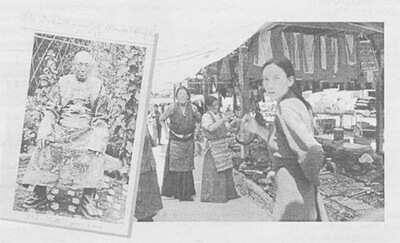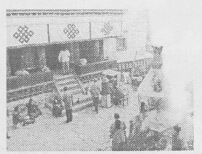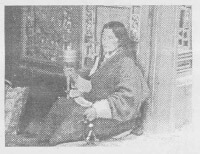| The following article is from the Spring, 2003 issue of the Snow Lion Newsletter and is for historical reference only. You can see this in context of the original newsletter here. |

BY MARK TURIN
Digital Himalaya is a pilot project to develop digital collection, archiving and distribution strategies for multimedia anthropological information from the Himalayan region. Based at Cornell and Cambridge universities, the project began in December 2000. The initial phase involves digitizing a set of existing ethnographic archives comprised of photographs, flints, sound recordings, fieldnotes and texts collected by anthropologists and travellers in Tibet, Nepal, Bhutan and the Indian Himalayas from the beginning of the 20th century to the present.
The five collections involved in the first phase of the project include 1,700 photographs taken between 1930 and 1935 by the British Political Officer Frederick Williamson in Tibet, Sikkim and Bhutan; over 100 hours of 16mm film from various parts of the central and eastern Himalayas filmed between 1936 and 1980 by Christoph von Furer-Haimendorf, supplemented by detailed field diaries; a large ethnographic collection relating to the Naga peoples of north-eastern India and parts of Burma, principally collected by five different anthropologists and travellers; materials from a study of the Gurung village of Thak, central Nepal, including over 100 hours of film, more than 3,000 photographs, and continuous censuses and fieldnotes covering the period 1968 to the present; digital video, photographs and ethnographic data from the Thangmi communities of Dolakha and Sindhupalcok districts in north-east Nepal.

The project has three long-term objectives: (a) to preserve in a digital medium valuable ethnographic materials that are degenerating in their current forms; (b) to make these resources available in a searchable digital format to scholars and the Himalayan communities front which the materials were collected; and (c) to develop a template for collaborative digital cataloguing that will allow users to contribute documentation to existing collections and eventually link their own collections to the system, creating a dynamic tool for comparative research.
In January 2003, members of the Digital Himalaya team travelled to Gangtok (Sikkim) and Mustang (Nepal) with the purpose of returning usable digital copies of archival footage from the 1930s and 1960s to the communities concerned. While we made use of laptop computers and high quality colour prints, it became clear during the field visit that DVD technology provided a powerful yet unexplored medium of exchange.
High quality compressed films from the 1930s onwards can be freely viewed and downloaded from the Digital Himalaya website. Please take a moment to view the unique footage at:
https://www.digitalhimalaya.com/

Images, from top: H.H. the 13th Dalai Lama (photo by Frederick Williamson); Tibetan merchants at Shigatse Market (photo by David Germano); Monk at Mem Nyingba Monastery, Lhasa; Entrance to Chokhang Library (photo by Frederick Williamson); Courtyard at Meru Nyingba Monastery, Lhasa

